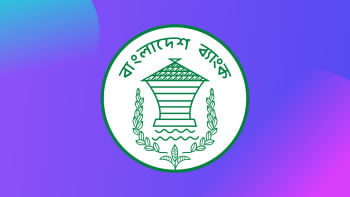High tax expenditure: A paradox in Bangladesh’s tax system

Revenue efforts—i.e., revenue generated from the national income or GDP, which is defined as tax to GDP ratio—have historically been low in Bangladesh. Between 2011 and 2023, the country's revenue efforts declined from 11 percent to 8.3 percent in 2023—a 2.7 percentage point drop over the 12-year period when the per capita GDP increased by about 200 percent. Since the trend in per capita GDP is increasing, suggesting that income is increasing (hence broader tax base), more revenue should be generated (even when the tax rates remain the same). Thus, the falling trend of revenue efforts point to an inefficient revenue system in Bangladesh.
A paradox in our tax system is maintaining a high tax expenditure ratio (or simply put, revenue forgone) when the revenue efforts are dismal. Tax expenditure refers to special provisions of the tax code, such as exclusions, deductions, deferrals, credits, and tax rates that benefit specific activities or groups of taxpayers. The outcome is a loss of revenue. Although data on tax expenditure in Bangladesh is not available every year, according to a recent study (March 2024) by the National Board of Revenue (NBR), the estimated total tax expenditure for direct tax in FY21 amounts to 3.56 percent of GDP. Although some of the tax expenditures may be justified on merit grounds, such a high level of tax expenditure against very low revenue efforts is clearly untenable. If one adds VAT and custom duty, the total tax expenditure may well be above five percent of GDP.
Furthermore, since the methodology to estimate tax expenditure is usually subjective, the final estimate is generally underestimated. The Global Tax Expenditure Database (GTED) progress report published in 2022 highlights this aspect. According to the report, over the past three decades, "the global average of reported revenue forgone from TEs was close to four percent of GDP and more than 24 percent of tax revenues. Yet, real numbers are probably significantly higher, since one of the main issues we encountered when building up the GTED was widespread underreporting." If this aspect is considered in Bangladesh, tax expenditure may be even higher, perhaps around seven to eight percent of GDP.
The GTED progress report compiled tax expenditure data of 95 countries who have been grouped into four categories: lower income countries (LICs); lower-middle-income countries (LMICs); upper-middle-income countries (UMICs); and high-income countries (HICs). The average tax expenditure of LICs (14 countries) in 2021 was 2.8 percent of GDP. In the same year, it was three percent for LMICs (20 countries), four percent for UMICs (23 countries), and 4.7 percent for HICs (38 countries). Compared to this data, Bangladesh's tax expenditure estimate (only for the direct tax) of 3.6 percent appears to be high.
Since transparency in this field has been limited, it is difficult to measure the benefits of this mechanism. Thus, a major concern with such high tax expenditure is uncertainty or ambiguity regarding its impacts on the economy and society. Since there has been no assessment to justify the existing tax expenditure, this practice should be limited. Consider a situation where a one percent cap has been imposed on the tax expenditure, which would release revenue of about four percent. In such a situation, revenue efforts will jump to 15 percent of GDP. The forgone revenue of four percent may be put to better use where one percent may go to social sectors, one percent may go to infrastructure, one percent to agriculture, and the rest to skills and productivity enhancement programmes.
Another justification for such an approach—i.e., enhanced public expenditure through realised revenue by capping the tax expenditure—is that expenditure allocations are usually subject to better transparency and scrutiny via the medium-term budget framework (MBTF) carried out by line ministries and the finance ministry, and the Annual Development Programme (ADP) conducted by the Planning Commission.
In 2023, the Policy Research Institute's (PRI) Centre for Domestic Revenue Mobilisation (DRM) carried out an exercise to justify the need to enhance expenditure in the merits sector through additional revenue mobilised through the direct tax system. Simulations were conducted to identify the impact of raising revenue from personal income tax with an analysis to understand the effects on the national economy. The simulations assume that the additional revenue raised is spent on infrastructure, social sector, social protection, agriculture and other public spending areas. Specifying public spending assumes the same proportional split between sectors, as is currently the case. The core finding from PRI's exercise shows that increases in personal income tax led to increases in GDP growth and labour income. This is primarily through the effect of allowing the government to invest more in public services. If revenue from personal income tax were to increase by two percentage points, economic growth would likely rise by 0.5 percent on top of the existing growth rates. Moreover, such a move may increase labour income by three percent.
The above analysis suggests that the practice of maintaining high tax expenditure is not feasible on grounds of forgone revenue, lack of transparency, and low value for money. Immediate action must be taken to improve the fiscal system in Bangladesh utilising this low-hanging fruit. Some strategic recommendations in this regard are: i) put a cap on the overall size of tax expenditure at the maximum level of one percent of GDP for the next two fiscal years; ii) form a high power committee to make decisions on who should be eligible for receiving tax expenditure benefits. The criteria may focus on employment generation, poverty reduction, productivity growth, and welfare of women, children and minority groups; and iii) the NBR/government should earn the right to provide tax expenditure. For instance, it could implement a formula where an additional 0.25 percent of tax expenditure is provided for every two-percentage-point gain in tax efforts. However, the overall ceiling should be around two percent of GDP.
Dr Bazlul Haque Khondker is chairman of South Asian Network on Economic Modeling (SANEM) and director at Policy Research Institute (PRI) of Bangladesh. He can be reached at [email protected].
Views expressed in this article are the author's own.
Follow The Daily Star Opinion on Facebook for the latest opinions, commentaries and analyses by experts and professionals. To contribute your article or letter to The Daily Star Opinion, see our guidelines for submission.

 For all latest news, follow The Daily Star's Google News channel.
For all latest news, follow The Daily Star's Google News channel. 








Comments